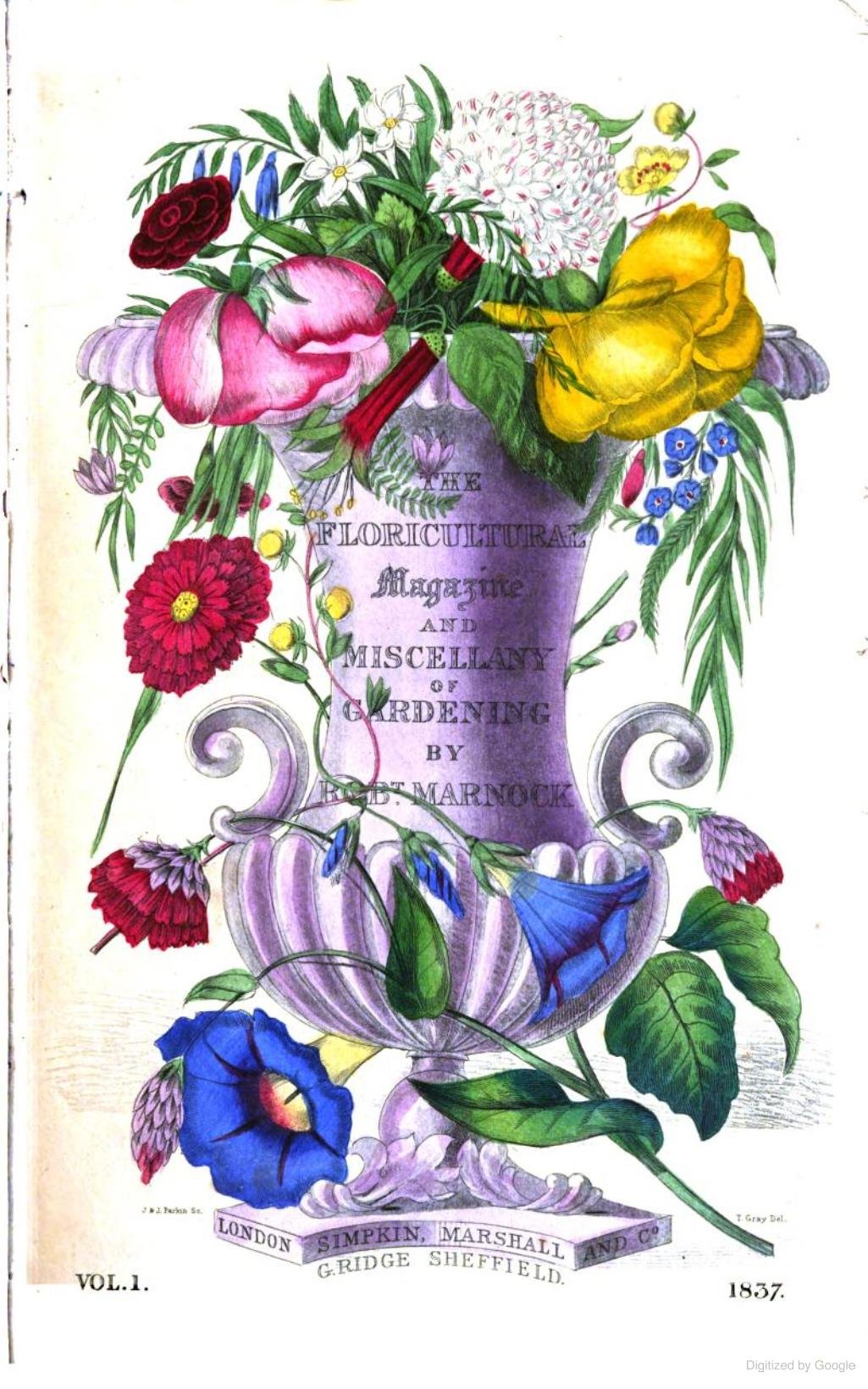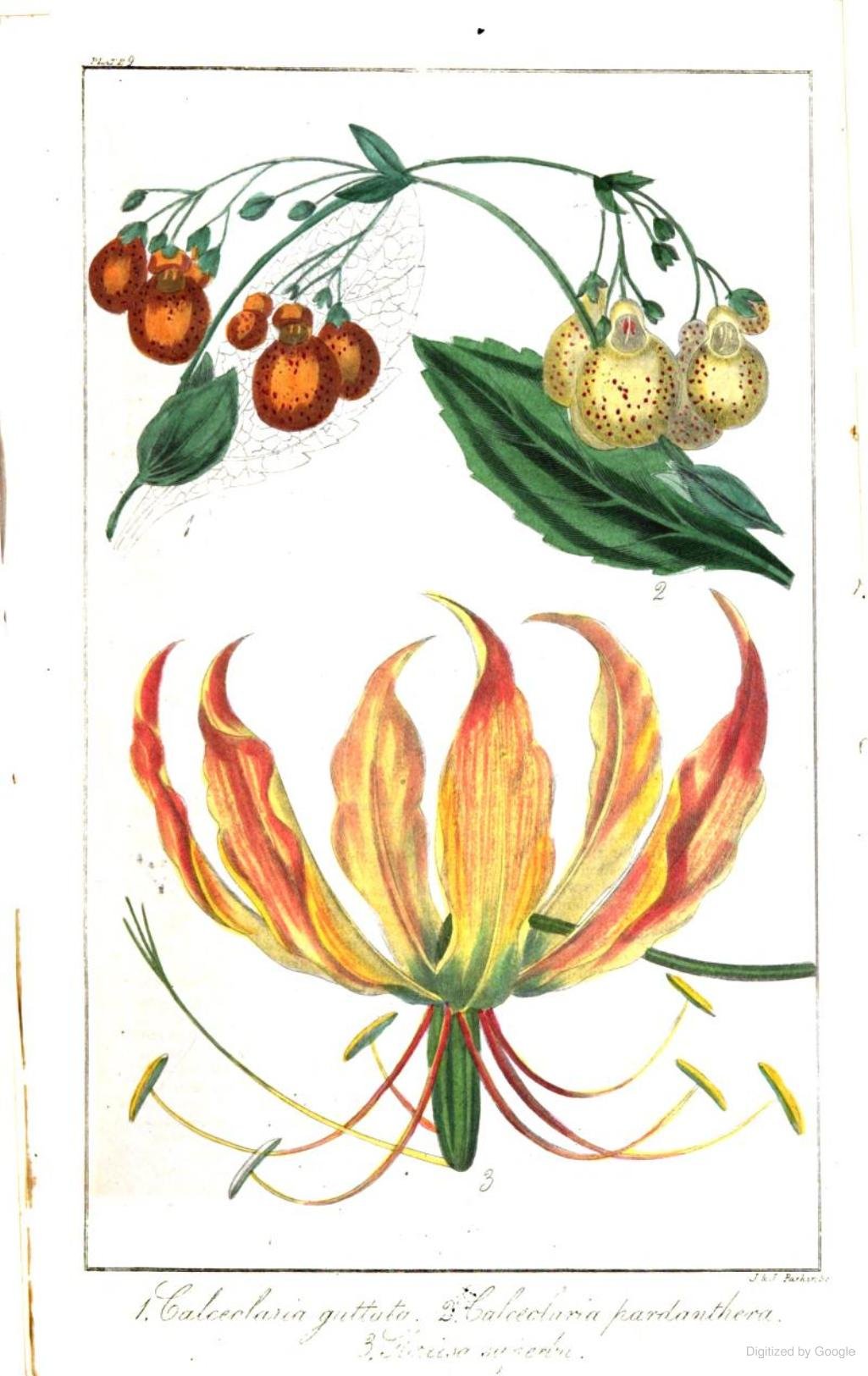Victorian Lady Flower Painters
There are centuries of history in which women used botanical art to access scientific study, often in domestic spaces. In 1796, Pricilla Wakefield (1751-1832) was the first British woman to write a very popular book on Botany. She was a philanthropist, author, and a lady of many talents. Wakefield did many scientific black and white drawings on a cream background showing flowers with botanical parts of plants. There were also many women in the Victorian Era who are remembered for their contributions to science through art. For example, Miss Sarah Anne Drake (1801-1857) in the 1830’s and 1840’s, produced an enormous amount of work including many of the plates of Orchids to Batemen’s ‘Orchidaceae of Mexico and Guatemala’. John Lindley (professor of Botany at London University) named a genus after her: Drakaea: Orchidacea.
A tropical orchid (Oncidium lanceanum): flowering stem and leaves. Coloured etching, after Miss S. A. Drake (1842). Wellcome Collection. Public Domain Mark
The work of another scientist, a Mycologist, Anne Maria Hussey (1805-1853), shows detailed complex anatomical structures. These scientists also include Beatrix Potter (1866-1943) whose legacy includes accurate observations of Flora, Fauna and Fungi later on in the century as well and her conservation efforts as her wonderful stories which continue to delight us all today.
Beatrix Potter, Mycological illustration of the reproductive system of a fungus. Hygrocybe coccinea (1897). From Wikimedia Commons.
With British Colonialism at its height across the world some women accompanied their husbands to colonise abroad. In 1856 Lady Canning moved to Calcutta upon her husband’s appointment as Governor General where, as an artist and botanist, she collected and painted the local flora. She died of Malaria in India. During the Victorian Period there were a generation of travelling illustrators. Marianne North (1830-1890) was one of them and her exotic floral paintings (in oil) can be seen in the dedicated Marianne North Gallery in Kew Gardens (1882). Colonial expansion also provided many of the “new” varieties of plants available to wealthy women back in Britain as well.
Women also wrote and illustrated many of the educational magazines about plants. For example, the popular Curtis’s Magazine was illustrated for over forty years by Matilda Smith (1854-1926), who was second cousin to Joseph Dalton Hooker (the Director of Kew). After being widowed at 36 Jane Webb Loudon (1807-1858) successfully wrote and painted manuals that were easy to understand including The Ladies Flower Garden and Botany for Ladies. Her husband, John Loudon had been a horticulturist and landscape designer and friend of Robert Marnock.
Plate 2 from Jane Loudon’s The Ladies' Flower-Garden of Ornamental Annuals (1842). From Wikimedia Commons.
The pursuit of such art drove other innovations as well. Originally, pigment earths or vegetable fibres were ground to a powder bound with gum or egg and applied on vellum to create the paints which these women. However in the 1830s Winsor and Newton produced the first innovative Wooden paint box complete with paint pans, glycerine paint for outdoor use and a ceramic mixing palette. Fashion was also influenced by botanical art and plant collecting. During the Victorian Fern Craze (1850-1890) Anne Pratt’s (1806-1893) accurate observations of Flowering Plants and Ferns of Great Britain (1855) contributed to the Fern’s appearance (as did floral designs) on clothing, tapestries, china, wallpapers, glass, wood carvings, buildings and sculpture.
Illustrated portrait of Lady Anna Maria Barkly in a fern-inspired fancy dress costume (1860). From Wikimedia Commons.
Extra Reading:
Wilfred Blunt and William Stearn, The Art of Botanical Illustration
Shirley Sherwood, A New Flowering- 1000 years of Botanical Art
Gill Saunders, Picturing Plants- The Analytical History of Botanical Illustration
Maureen Lazarus, Heather Pardoe, Deborah Spillards, The Paradise Garden
David Scrase, Flower Drawings
Jack Kramer, Women of Flowers - A tribute to Victorian Women Illustrators







